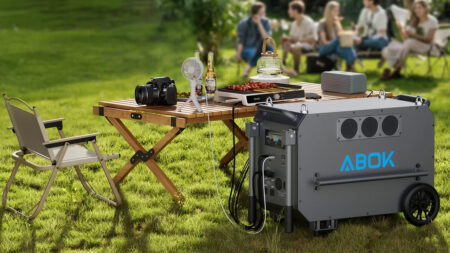Ah, the humble clothes dryer – where would we be without it? Probably hanging our clothes on every available surface, hoping they dry before we run out of clean shirts. But what happens when this trusty appliance stops working as it should? Before you call in the professionals, let’s explore some common dryer problems and how you can fix them yourself. It is easier than you think and often just requires a bit of troubleshooting!
Unusual Noises
Why does my dryer sound like a pair of sneakers tumbling down a staircase? If your dryer begins to emit strange noises, it is an indicator that there could be an underlying issue. The usual suspects often include worn-out rollers, a faulty drum support bearing, or objects that have accidentally become lodged in the blower wheel. To address these problems, you will need to first ensure that the dryer is unplugged before opening it up to locate and replace the malfunctioning components.
If this task seems daunting, or if the problem persists after your initial efforts, it might be time to call in the experts. Trusting professionals with this task not only saves you time but also ensures that the appliance repairs are done safely and effectively.
Dryer Won’t Start
Ever feel like your dryer is giving you the cold shoulder? It will not start, and the silence is deafening. Check the door switch, thermal fuse, and start switch. These can often fail and prevent your dryer from starting. Testing with a multimeter can help you determine if these parts need replacing.
Dryer Stops Spinning Mid-Cycle
It’s like your dryer decided to take a nap halfway through its job. This can be caused by a broken belt, an overloaded drum, or a worn-out motor. Replacing the belt is straightforward if you follow the manual, and remember, keeping the load light can prevent future issues.
Overheating Issues
When your dryer gets hotter than a summer barbecue, it is time to act. Overheating can be dangerous. Make sure the venting system is clear and that the heating element isn’t malfunctioning. A clogged vent can cause overheating and be a fire hazard as well.

Dryer Not Heating
A cold dryer is just a noisy closet. If your dryer runs but doesn’t heat, the heating element, thermostats, or thermal fuse might be to blame. These components can be tested and replaced relatively easily.
Taking Too Long to Dry Clothes
When drying a single load takes longer than reading “War and Peace,” there is a problem. This is often due to clogged vents. Regularly cleaning your dryer’s lint filter and venting system can dramatically improve drying times.
Dryer Keeps Shutting Off
Random shutdowns? It’s not your dryer being capricious – it’s a cry for help. This might be due to a faulty thermostat or a failing motor. Both components can overheat, causing the dryer to shut down to prevent damage.
Bad Smells
If your clothes come out smelling like they have been barbecued, it’s time to investigate. This can be caused by burning of lint build-up. Cleaning your lint trap and exhaust duct regularly can prevent these smells.
Also Read: Mastering Washing Machine Maintenance Guide
Lint Trap Issues
The lint trap: a treasure trove of forgotten receipts, coins, and… fire hazards? Yes, a full lint trap can lead to serious issues. Keeping it clean is simple and can prevent many of the problems listed above.
Electrical Concerns
Your dryer’s electric demeanor can sometimes spark concern. Electrical issues can be complex. If resetting the circuit breaker doesn’t solve the problem, it may be time to consult a professional.
Drum Issues: Cracks and Misalignment
A crack in the drum can put a serious wrinkle in your laundry routine. If the drum is cracked or misaligned, this can lead to serious functionality problems and even damage your clothes.
Sensor Problems
Modern dryers often have moisture sensors to optimize drying time. If these sensors become dirty or faulty, they may incorrectly read moisture levels, causing your dryer to shut off prematurely or run too long.
Maintenance Tips
Regularly Clean the Lint Filter: After every load, remove and clean the lint filter to enhance air circulation and prevent fire hazards. A clogged lint filter can significantly increase drying times and strain the dryer’s motor.
Inspect and Clean the Dryer Vent: Annually inspect and clean the dryer vent from the inside of the dryer to the outside vent cap. Use a vent cleaning brush or a vacuum to remove lint buildup that can obstruct airflow and pose a fire risk.
Check the Venting System: Ensure that the venting system is properly connected and there are no kinks or punctures in the vent hose. A well-maintained vent system allows for optimal airflow, which is crucial for the dryer’s performance and safety.
Keep the Area Around the Dryer Clean: Remove any debris or clutter around the dryer. This not only reduces the risk of fire but also allows for adequate air intake, which is essential for the dryer to operate effectively.
Periodically Inspect the Drum Seals: Check the seals around the drum for signs of wear or damage. If the seals are compromised, excess air can enter the drum, leading to longer drying times and increased energy usage.
Test the Door Latch: A properly functioning door latch is crucial for safety and efficiency. If the door doesn’t close securely, the dryer might stop operating mid-cycle or run inefficiently, so ensure the latch is in good condition.
Avoid Overloading: Overloading the dryer can lead to wear and tear on the motor and drum, and can also affect drying efficiency. Always adhere to the manufacturer’s guidelines for load sizes to ensure optimal performance.
Conclusion
In the broader perspective of household appliances, the dryer often requires less upkeep compared to others like refrigerators or ovens. However, this perception of being low-maintenance doesn’t mean it should be neglected. Regular checks and basic understanding of common problems can greatly extend its lifespan and ensure it operates efficiently. For instance, by simply clearing the lint trap and ensuring the vent is not obstructed, you can prevent a host of issues that typically plague neglected dryers.
Additionally, for those times when a problem seems beyond DIY fixes, consulting with professionals can be a wise decision. They specialize in diagnosing and repairing dryer issues, ensuring that even the most daunting problems are resolved quickly and effectively. Thus, a bit of preventative maintenance combined with professional support when needed will keep your dryer in top condition for years to come.
Follow Homecrux on Google News!




